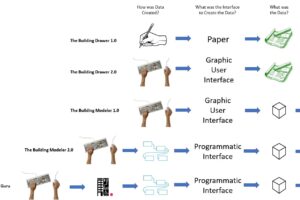Autodesk Seminar in Hong Kong – 4 Observations of a Computational Engineer
Introduction
I recently attended an Hong Kong Autodesk Industry Advisory Board (AIAB) Annual Conference last Friday in Mong Kok, Hong Kong. It was a great opportunity to not only see the cutting edge technologies that are coming our industry’s way, but also, see how other professionals in Hong Kong are using BIM and leveraging it to handle everyone’s favorite box-ticking exercise, statutory government submissions.
It’s always particularly interesting for me to be a fly on the wall in these types of seminars which are
- funded by a specific software house
- geographically tailored to one market
On the former, as a first-principles-first guy, not a software-first guy, so this automatically has me going in with a different point of view than most in attendance who arrive thinking BIM is some sort of futuristic thing. It is not. It hasn’t been for quite some time. Stop thinking it is AEC industry!
On the latter point, it’s interesting to be a foreigner in a place like Hong Kong who’s AEC industry is different from other parts of the world, largely due to statutory requirements that are specific to Hong Kong. Effectively, in Hong Kong, all aspects of a new building are stringently reviewed by some government entity. In most parts of the world, there is a need to appease the government that a design is safe, fit for purpose, and in line with zoning laws, but most of the time, it’s nothing more than a box-ticking exercise and not a huge deal to overcome. Yet in Hong Kong, this process is in your face and just as important (if not more important) as fundamental architectural and engineering design decisions. For instance, the Hong Kong Buildings Department (BD) has to give consent for the construction or modification of any building in Hong Kong, which as previously stated, is not that abnormal in and of itself. What is a bit abnormal and special to Hong Kong is the level of detail in which the government checks all aspects of a design. In the case of Hong Kong BD, this literally means a stringent check of every drawing and calculation for the project. The level of stringency is dependent on the inherent “personal” nature of the process – it depends on which government worker is checking your project as to how many issues you are going to have from them. This makes projects in Hong Kong riskier to clients. This in turn makes what is normally just a box-ticking exercise in other parts of the world into something that is stressed just as much (if not more than) first-principles.
Anyways, here’s my (hopefully) unique-perspective 4 take-away’s from this seminar:
Virtual Reality and Augmented Reality

These things are coming to a theatre near you soon! Think of the ability for us to go on “site meetings” at a client’s office before even a contractor is appointed and all the associated issues that will be avoided using such a tool. One of the sessions was run by a contractor, who shared some valuable insight – we take it for granted as well-educated designers that we can looks at 2D drawings and convert solid and dotted lines into 3D objects in our heads. But in reality, we need uneducated folks (and I don’t mean that in a disparaging way – site guys are smarter than most) to be able to understand these thoughts as well, like clients and especially the guys in the field who actually will make this 3D building a reality. As such, this particular contractor had purchased a VR set to allow his Forman to see in 3D what they needed to build before they began work for the day to avoid them having to do these mental gymnastics, and potentially making errors. Major food for thought. If you’ve not tried one of these machines, I definitely recommend it.
Yet, there is one main caveat I would like to state for the AEC industry: this technology will only be useful to those already adept in creating 3D virtual worlds. So the juxtaposition of seeing this brand new technology presented in a town where the AEC industry is still very much a 2D business was quite interesting.
If you are still only working in 2D, there’s never been a better time to add another dimension to your resume. After all, it’s that third dimension in which you are living your life and creating you designs.
The Overlord Autodesk
Given I’m a computational and parametric guy and not just a BIM guy, I tend to see things a bit differently and am less easily impressed as others at this conference. So I found this pretty amusing – at one point, the main sales rep for Autodesk Asia happily proclaimed Revit has been around for 10+years and it’s the main BIM tool of choice for many. Yep, fair statement. But in the same breath, she managed to nonchalantly admit (and I paraphrase) “…but before Dynamo, to create a tunnel in Revit was nearly impossible”. What? Last I checked, tunnels aren’t new inventions! Yet, here was their head sales guru admitting this software, which has had 10 years to get up to speed still can’t do a basic civil structure without your cleverness.
This is just another example on how we cannot rely on software companies to be there for us in every design situation. Even they will tell you that they have stopped trying to give you any more out-of-the-box features, but rather, they will give you a “backdoor” so you can fix the problems yourself. This is a true sign we must be able to create our own digital tools from time to time to deal with situations like this. Don’t be a puppet and the slave of Autodesk’s self proclaimed limited software! Start learning Dynamo and coding!
BIM in Hong Kong
There was quite a lot of talk about using BIM in HK for Statutory submissions and ADV-34, which can be seen below:

I’ve highlighted the first sentence as it really puts in perspective the mentality of many as it relates to BIM that it is new. Once again, BIM has been around since the 80’s and in our industry, for at least 10 years – not new by anybody’s definition and most would argue not that innovative. That’s pretty much a synopsis of the AEC industry in general though. The conference held a debate where 4 professionals argued whether this document – which basically was the government saying “yes, BIM exists….good for yewwwww. Now, where are my 2D drawings?” – went far enough.

It was funny to watch as Authorized Person (Hong Kong professional who is authorized to stamp drawings) on the panel was saying it was such a huge step forward and then, when it got to the only other foreigner on the panel who had an outside perspective as to how far behind Hong Kong is, he was like “WTF, are you talking about – you are patting them on the back for acknowledging the existence of VHS tapes. They’re not even saying they are going to transition to VHS anytime soon!”
There was a very interesting talk on using out of the box Revit to get deal with statutory requirements easier. The system was quite simple and dealt solely with CAD standards for view templates to allow for ALL information, BD and construction, to reside in the same model but be displayed correctly depending on what party was receiving the drawing. This was very reminiscent of the solutions discussed when myself and a colleague were looking into digital solutions to these submissions about a year ago.
Black Box False Prophets
There was a company called CivilConnect whose software promises to generate BD documents for you ‘magically’. The slogan on their slides (yet mysteriously not on their website) was “Software Powers the Engineer”. See any problems with that? For the non-native speakers, think of it this way – If I say “Food powers Emidio”, it means that if I take food away from Emidio, he will perish. If this really what software is to engineers? Without software are we completely helpless?
I would have said “Software Empowers the engineer” – this stuff represents an extension of our minds, not our minds! Maybe I’m being too much of an English policeman, but in any case, watch out for this mentality, as it’s certainly not something that represents good engineering or design. It’s easy to spot this syndrome too – just listen for somebody who says they are going to take care of all of your problems for you. The number of times the guy said “magic” in his presentation, you’d have thought he was David Blaine. “Oh, and press the button and ‘boom’, all of your BD drawings are created”. I’ll believe it when I see it.
I’m not trying to pick on this particular company or be mean, but I can’t stress enough that this software-first mentality in the AEC industry is getting us nowhere. Oh – sorry again – every feature of the software that was put on display could be scripted by any of you using Dynamo. Take responsibility for your tools people, that’s the future.
Tag:#Autodesk, #BIM, #Conference, #HongKong



